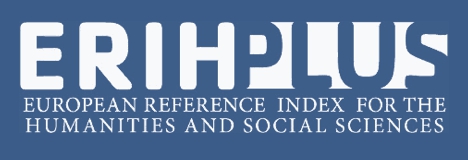Of the traditional determinants of migration until the impulsioneds by liquid modernity in perspectives of Alice's Adventures in Wonderland and of Dry Lives
Abstract
The aim of this article is to describe the coexistence of the traditional motivators of the migratory act with the new determinants boosted by BAUMAN's “liquid modernity” (2001), through the analysis of Alice's dialogues with the Cheshire Cat and with the Queen of Hearts present in Alice's Adventures in Wonderland, by Lewis CARROLL. Also through the examination of the life and actions of the family of the retreatants of the group of “sertanejos” in the book Dry Lives, by Graciliano RAMOS. We realize that new factors resulting from rapid social, economic and technological transformations irreversibly affect the way where the production is organized and the relationship between capital and work. However, the fluid phase of capitalism overlapped, but not eliminated, the heavy phase of capitalism, which is likely to influence the flow of migrants, especially between large cities in developed and developing countries.
References
BAUMAN, Z. Modernidade líquida. Rio de Janeiro: Jorge Zahar, 2001.
______. Estranhos à nossa porta. Rio de Janeiro: Jorge Zahar, 2017.
______. Migration and identities in the globalized world. Philosophy & Social Criticism, Boston, v. 37(4), p. 425-435, 2011.
BENKO, G. Economia, espaço e globalização: na aurora do século XXI. 3. ed. São Paulo: Hucitec/Annablume, 2002.
BRITO, F. R. A. de. As migrações internas no Brasil: um ensaio sobre os desafios teóricos recentes. Belo Horizonte: UFMG/Cedeplar, 2009. 20 p. (Textos para discussão 366).
CARROLL, L. Alice no país das maravilhas. 2. ed. São Paulo: Arara Azul, 2000.
DOMENACH, H. Movilidad espacial de la populación: desafios teóricos e metodológicos. In: CUNHA, José M. P. da (Org.). Mobilidade espacial da população: desafios teóricos e metodológicos para o seu estudo. Campinas: Unicamp, 2011. p. 33-44.
ELIZAGA, J. C. Migrações internas: evolução recente e situação atual dos estudos. In: MOURA, Helio A. de (Coord.). Migração interna: textos selecionados. Fortaleza: BNB, 1980. p. 539-575.
HARARI, Y. N. Sapiens: uma breve história da humanidade. 29. ed. Porto Alegre: L&PM. 2017.
HARVEY, D. Condição pós-moderna: uma pesquisa sobre as origens da mudança cultural. 21. ed. São Paulo: Loyola, 2011.
LEE, E. S. A theory on migration. Demography, Chicago, v. 3, n. 1, p. 47-57, 1996.
MASSEY, D. S. et al. Theories of international migration: a review and appraisal. Population and Development Review, New York, v. 19, n. 3, p. 431-466, september 1993.
MOURA, H. A. de (Coord.). Migração interna: textos selecionados. Fortaleza: BNB, 1980.
PERPETUA, G. M. Mobilidade espacial do capital e da força de trabalho: elementos para uma teorização geográfica a partir da matriz marxista. Revista Pegada, Presidente Prudente, v. 14, n. 1, jul. 2013, p. 58-80. Disponível em:
PIORE, M. J. A long term perspective on immigration and the crisis. XIV Congress of Immigration: immigration and economic crisis, new challenges in social intervention. Almeria, 18 october 2012. 13 p.
RAMOS, G. Vidas Secas. 17. ed. São Paulo: Editora Martins, 1967.
SINGER, P. Economia política da urbanização. 11. ed. São Paulo: Brasiliense, 1987.
TRUZZI, O. Redes em processos migratórios. Tempo Social, USP, v. 20, n. 1, p. 199-218, junho 2008.

This work is licensed under a Creative Commons Attribution-NonCommercial 4.0 International License.
Policy Proposal for Free Access Journals
Authors who publish in this journal agree to the following terms:
a. Authors retain the copyright and grant the journal the right of first publication, with the work simultaneously licensed under the Creative Commons Attribution License which allows the sharing of the work with acknowledgment of the authorship of the work and initial publication in this journal.
b. Authors are authorized to take additional contracts separately, for non-exclusive distribution of the version of the work published in this journal (eg publish in institutional repository or as a book chapter), with acknowledgment of authorship and initial publication in this journal.
c. Authors are allowed and encouraged to publish and distribute their work online (eg in institutional repositories or on their personal page) at any point before or during the editorial process, as this can generate productive changes, as well as increase the impact and The citation of published work (See The Effect of Free Access).





















